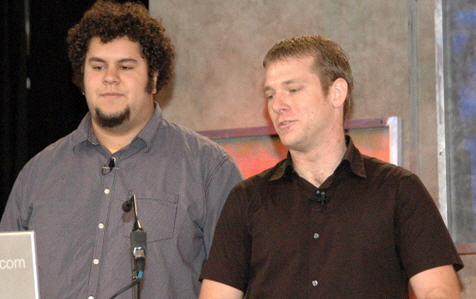Surfing the Relationship Update Stream

Brad Fitzpatrick and David Recordon are on a mission to free up the social graph from walled gardens (see their "Thoughts on the Social Graph"). Executives from MySpace, Facebook and Google agree that users should own their own data, including their social graph (the people they are connected to a social network), but so far the walls have not come down much.
"We want to get to a point that just as blogs sites can't launch without RSS or Atom, a social network can't launch without an analogous data interchange format," said Fitzpatrick.
"The social graph, who my friends are, is not something Facebook or LiveJournal owns," Recordon said.

The two were on stage at the Web 2.0 Summit talking about the launch of the Six Apart Relationship Update Stream, a feed of social relationship data that allows Web services to send and receive data when changes to social relationships occur on their service. Magnolia and LiveJournal support it now, and Hi5, Plaxo and Six Apart's Vox will add support soon. (See David Recordon's blog post.)
Relationship Update Stream description:
* Allows all open services to share public relationship data * Provides real-time updates about changes to public relationships * Makes it possible for services to both publish and subscribe to public relationship changes * Data quality is high since services have to vouch for the data they provide * Designed by developers, for developers * Builds on top of the Atom Stream format that's already seen strong adoption and has existing client libraries
Benefits:
* More value for your users, as changes they make on your service are reflected on the other services they use * Fewer spiders repeatedly crawling your service to index relationship information--that means less robot traffic means lower bandwidth costs and less load on your servers * More immediate access to the network changes your users make on other services * A new platform for thinking of innovative new features that haven't been possible in the past
"Allowing users to move between site benefits everyone in the long run," Recordon said. Relationship Update Stream is a step in the right direction for breaking down the walls.